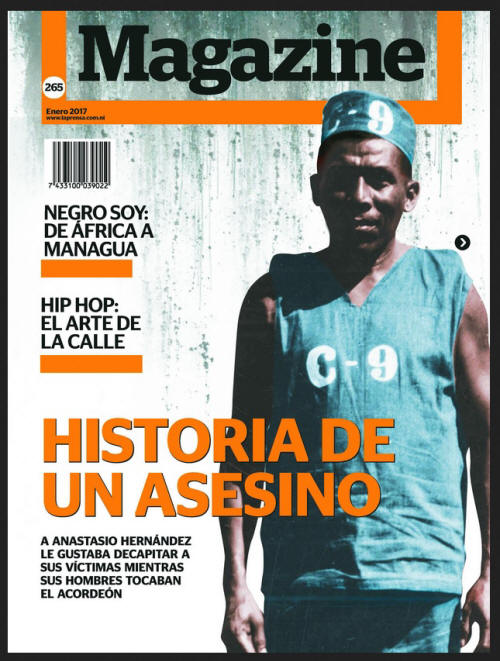|
.jpg) THIS
IS THE HOMEPAGE for documentary
evidence relating to political gangs and
political gang violence in Nicaraguan history
unrelated to the EDSN, Marines & Guardia.
Such political gangs are crucial for
understanding the Sandino rebellion, expressing
key features of the social & cultural
environment that, starting with Sandino's first
uprising at the San Albino Mine in October 1926,
also gave rise to the political
practice of Sandinismo. At present the
evidence is focused mainly on political gangs
created under the aegis
Chamorrismo — the
complex webs of allies, clients & supporters of
el último caudillo ("the last caudillo")
Emiliano
Chamorro, who dominated
Nicaraguan political life for most of two
decades, and through most of the period of the
"first" US occupation (1912-1927). The
Chamorristas' decades-long dominance saw its
death throes in the US supervised elections of
November 1928. Chamorrismo died a very
ugly death. And as these documents make
plain, its relationship with Sandino's struggle
was complex and multilayered.
(Illustration: emblem for these "Gangs" pages, adapted from two editorial cartoons
in La Noticia, Managua, 1 January and 11 March 1928:
in the original, the man representing Chamorrismo
is blocking the McCoy electoral law
(establishing the procedures for the Nov. 1928
elections) from
the House of Deputies with the warning: "Pass
here, but macheted.") THIS
IS THE HOMEPAGE for documentary
evidence relating to political gangs and
political gang violence in Nicaraguan history
unrelated to the EDSN, Marines & Guardia.
Such political gangs are crucial for
understanding the Sandino rebellion, expressing
key features of the social & cultural
environment that, starting with Sandino's first
uprising at the San Albino Mine in October 1926,
also gave rise to the political
practice of Sandinismo. At present the
evidence is focused mainly on political gangs
created under the aegis
Chamorrismo — the
complex webs of allies, clients & supporters of
el último caudillo ("the last caudillo")
Emiliano
Chamorro, who dominated
Nicaraguan political life for most of two
decades, and through most of the period of the
"first" US occupation (1912-1927). The
Chamorristas' decades-long dominance saw its
death throes in the US supervised elections of
November 1928. Chamorrismo died a very
ugly death. And as these documents make
plain, its relationship with Sandino's struggle
was complex and multilayered.
(Illustration: emblem for these "Gangs" pages, adapted from two editorial cartoons
in La Noticia, Managua, 1 January and 11 March 1928:
in the original, the man representing Chamorrismo
is blocking the McCoy electoral law
(establishing the procedures for the Nov. 1928
elections) from
the House of Deputies with the warning: "Pass
here, but macheted.")
.jpg) .jpg) Emblematic of
Chamorrismo in practice is the case of
the Mosonte-born cortacabeza Anastasio
Hernández and fellow gang leader José Eulalio
Torres (at right). Especially explosive
were the eighteen months from the Espino Negro
Accord of early May 1927 until the US-supervised
elections in early November 1928, which swept
the Liberal General José María Moncada into the
president's office. During these critical
18 months, local Liberal and especially
Conservative gangs filled the power vacuum
created by the dissolution of the national
state. The Conservative Chamorristas, with
a lock on political power for nearly two
decades, feared losing the elections and did
everything they could to disrupt the electoral
process. That they ultimately failed, I
argue,
matters less than the nature and intensity of
their efforts. Because the Sandinistas
borrowed many of the violence-making practices
that had long characterized the region,
understanding these gangs is key to understanding
the rebellion that followed. (Photos
of Anastasio Hernández (left) and fellow
Chamorrista gang leader José Eulalio Torres,
National Penitentiary, Managua, 1928, US
National Archives).
Emblematic of
Chamorrismo in practice is the case of
the Mosonte-born cortacabeza Anastasio
Hernández and fellow gang leader José Eulalio
Torres (at right). Especially explosive
were the eighteen months from the Espino Negro
Accord of early May 1927 until the US-supervised
elections in early November 1928, which swept
the Liberal General José María Moncada into the
president's office. During these critical
18 months, local Liberal and especially
Conservative gangs filled the power vacuum
created by the dissolution of the national
state. The Conservative Chamorristas, with
a lock on political power for nearly two
decades, feared losing the elections and did
everything they could to disrupt the electoral
process. That they ultimately failed, I
argue,
matters less than the nature and intensity of
their efforts. Because the Sandinistas
borrowed many of the violence-making practices
that had long characterized the region,
understanding these gangs is key to understanding
the rebellion that followed. (Photos
of Anastasio Hernández (left) and fellow
Chamorrista gang leader José Eulalio Torres,
National Penitentiary, Managua, 1928, US
National Archives).
At present these Gangs pages offer two
document collections, linked on the
table above and below, with additional
collections forthcoming:
 In
January 2017, the case of Anastasio
Hernández & Jose Eulalio Torres as uncovered by
the U.S. historian Michael J. Schroeder (me) was
spotlighted in an 8-page cover article in La
Prensa Magazine by the Nicaraguan
journalist Amalia del Cid. In
January 2017, the case of Anastasio
Hernández & Jose Eulalio Torres as uncovered by
the U.S. historian Michael J. Schroeder (me) was
spotlighted in an 8-page cover article in La
Prensa Magazine by the Nicaraguan
journalist Amalia del Cid.
Click on
the image at right for a PDF file of
this very fine article.
|

.jpg)
.jpg)
.jpg)

.jpg)